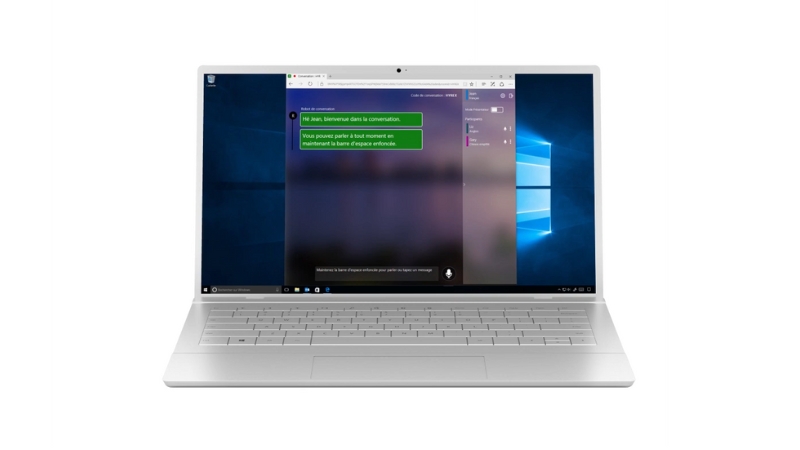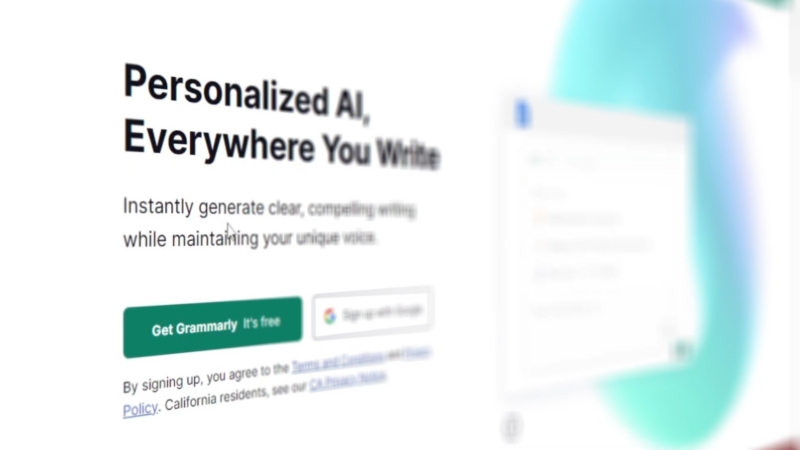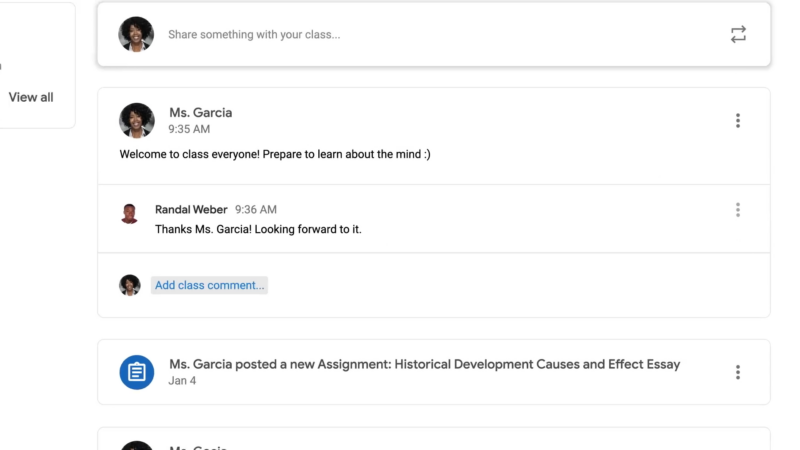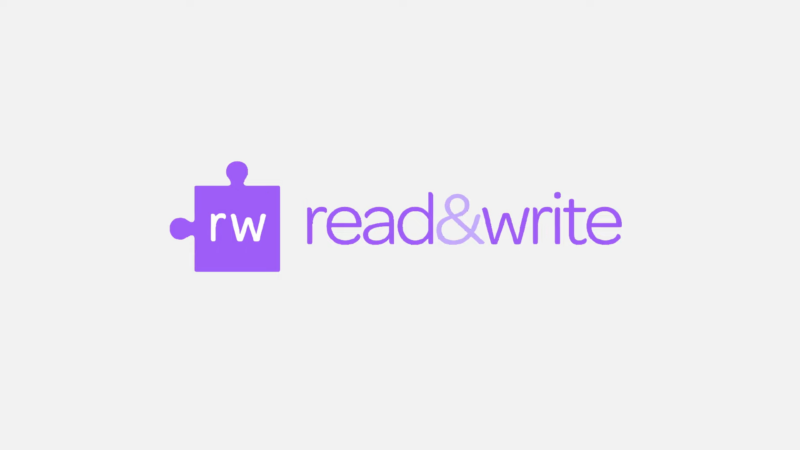With classrooms now spanning continents, backgrounds, and abilities, educators and institutions need powerful, inclusive tools that level the playing field for all learners.
So, how can we support students with visual impairments, language barriers, or learning differences—while also enabling instructors to create more inclusive experiences?
This guide explores 10 of the most impactful digital tools—from free screen readers like NVDA to real-time transcription services like Otter.ai and literacy platforms like Read&Write.
1. NVDA (NonVisual Desktop Access)
NVDA is a powerful, free, and open-source screen reader built specifically for the Windows platform. Designed to ensure digital access for users who are blind or visually impaired, NVDA reads the content on the screen aloud or transmits it to a refreshable Braille display.
Unlike expensive commercial screen readers, NVDA is completely cost-free, funded through donations, and remains one of the most inclusive and accessible options available. It works seamlessly with web browsers, email clients, word processors like Microsoft Word, and other everyday applications, supporting over 50 languages.
Additionally, NVDA can be run portably from a USB stick—allowing students to carry their accessibility solution with them across computers. Its support for plug-ins and add-ons also makes it highly customizable.
In academic settings, NVDA empowers students to read digital textbooks, browse online course materials, and interact with learning management systems independently.
It’s also a go-to tool for educators and disability services professionals to audit and test the accessibility of content and systems, ensuring compliance with inclusive design standards.
Feature
Details
Purpose
Free screen reader for blind/visually impaired
Key Support
Speech output, Braille, web/app access
Price
Free (open-source)
Platforms
Windows (8.1 and up)
Best For
Blind students, accessibility testing
2. Microsoft Immersive Reader
View this post on Instagram
Immersive Reader is an inclusive reading tool developed by Microsoft to aid literacy and comprehension for all learners, especially those with dyslexia, ADHD, or limited English proficiency.
Embedded within Microsoft tools like Word, OneNote, Outlook, Teams, and the Edge browser, Immersive Reader transforms written content into a customizable and interactive experience.
It can read text aloud with word-by-word highlighting, allowing students to both see and hear the words simultaneously—improving decoding and fluency. Students can personalize text by adjusting font size, spacing, and background color, which is critical for reducing visual stress or increasing readability.
It also includes a syllable splitter, grammar color coding, line focus mode, and a picture dictionary, which are especially beneficial for younger readers or English Language Learners.
A standout feature is its built-in translation tool, capable of translating full documents or individual words into over 100 languages—with read-aloud functionality in 40+ languages.
Feature
Details
Purpose
Inclusive reading & comprehension support
Key Support
Dyslexia, ADHD, ESL, low literacy
Price
Free (part of Microsoft 365 & Edge)
Platforms
Web, Windows, Mac, iOS, Android
Best For
Neurodiverse learners, multilingual classrooms
3. Microsoft Translator

Microsoft Translator is a real-time AI-powered translation and speech captioning tool that helps bridge communication gaps in classrooms, lectures, and meetings.
Designed with inclusivity in mind, the Translator converts spoken words into text captions on-screen and translates them into over 70 languages.
It’s especially useful for English Language Learners (ELLs) and deaf or hard-of-hearing students, offering them immediate access to spoken content in a format they can understand.
The “multi-device conversation mode” allows multiple participants to view a conversation in their own language on phones or laptops—perfect for multilingual classrooms. Teachers can start a live session, and students join via a browser or app, seeing real-time captions and translations during lectures.
It also works offline with downloadable language packs. Translator integrates with platforms like PowerPoint and Teams, enabling translated subtitles during presentations or live meetings.
For schools with diverse populations, Translator supports inclusive instruction, smoother communication with non-English-speaking families, and better engagement for students with auditory processing challenges.
Feature
Details
Purpose
Live speech translation & captioning
Key Support
ESL, deaf/hard-of-hearing
Price
Free
Platforms
Web, iOS, Android, PowerPoint, Teams
Best For
International students, live lectures, parent meetings
4. Otter.ai
@verodontist study SMARTER not HARDER!!! this tool is the best when your professor tests on information that they say and not just what’s in the slides👏🏼👏🏼 AI has been a GAME CHANGER! #ai #otter @Penseum – Learn Better #studytok #artificialintelligence #studyhack #studytips #dentalschool #medschool #college #university #futuredentist #dentalstudent #ucla #uop ♬ Sound effect glitter magic – Quetzal BGM
Otter.ai is a smart transcription and note-taking tool that converts live or recorded speech into searchable, interactive text in real-time.
It’s widely used in both higher education and professional settings to assist with lecture capture, meeting documentation, and improved accessibility for hearing-impaired and neurodivergent learners.
Otter offers automatic speaker recognition, timestamps, and keyword search features, along with the ability to insert highlights, comments, and images.
It integrates easily with video conferencing platforms like Zoom, Google Meet, and Microsoft Teams, making it ideal for online classes.
Otter saves transcripts to the cloud, allowing students to replay audio, skim highlights, and review missed information. Students with attention difficulties (e.g., ADHD) benefit from being able to listen without pressure to take detailed notes, while non-native English speakers gain clarity by reading the transcript.
Otter also enables instructors to generate summaries for class recaps. With a generous free tier and optional upgrades, Otter is a budget-friendly and powerful accessibility tool.
Feature
Details
Purpose
Real-time voice transcription & note-taking
Key Support
Hearing loss, ADHD, ESL learners
Price
Freemium (free + paid plans)
Platforms
Web, iOS, Android; Zoom/Teams integrations
Best For
Lecture capture, class summaries, study aids
5. Grammarly

Grammarly is a widely used writing enhancement tool that provides real-time feedback on grammar, spelling, style, tone, and clarity.
It’s especially valuable for students who struggle with English language mechanics due to dyslexia, dysgraphia, or language barriers.
Grammarly analyzes written text and suggests corrections and improvements with context-aware explanations—helping students learn from their mistakes.
The premium version adds advanced feedback on clarity, word choice, and a plagiarism checker, useful in academic writing. It also includes a tone detector and citation suggestions.
Grammarly integrates with Google Docs, email platforms, browsers, and MS Word, and offers a mobile keyboard for writing on the go.
ESL students particularly benefit from its fluency suggestions, and students with learning disabilities gain confidence by submitting clearer, more polished work.
Feature
Details
Purpose
Grammar and writing assistant
Key Support
ESL, dyslexia, dysgraphia
Price
Freemium (basic free; premium plans)
Platforms
Web, Chrome, Word, Mac/Windows, iOS, Android
Best For
Writing support, academic editing
6. Khan Academy
Khan Academy is here to keep everyone learning no matter what. It’s why we exist as a #nonprofit.💝
When schools close we see it as our duty to step up.
Parents can keep kids on track during school closures with our ✨free✨ daily learning schedules.https://t.co/avdxsyT9Fi
— Khan Academy (@khanacademy) January 13, 2025
Khan Academy is a free, nonprofit platform offering a rich library of educational videos, practice problems, and progress-tracking tools across subjects like math, science, history, economics, and standardized test prep.
All lessons are available at no cost and include closed captions and multi-language support, making it ideal for low-income learners and students with hearing impairments.
Each topic comes with quizzes and a mastery path that adapts to the student’s skill level.
The platform’s self-paced nature is great for students with learning differences, allowing them to revisit concepts until mastery. Teachers can assign lessons and monitor progress via “coach” tools.
Khan Academy levels the playing field by giving every learner access to world-class instruction regardless of zip code, ability, or budget.
Feature
Details
Purpose
Free academic video & practice library
Key Support
Low-income, hearing impaired, LD, ESL
Price
Free
Platforms
Web, iOS, Android, Chromebooks
Best For
Tutoring, test prep, catch-up learning
7. Google Classroom

Google Classroom is a free learning management platform that brings assignments, grading, collaboration, and communication into one digital hub.
Integrated with Google Docs, Drive, Calendar, and Gmail, it enables teachers to create virtual classrooms, distribute homework, and manage class progress.
It supports screen readers, Braille displays, and voice typing—making it accessible for students with visual, motor, or learning impairments.
Google Meet, built-in to Classroom, offers live captions. The platform is used worldwide, including in under-resourced schools, due to its zero cost and compatibility with low-cost Chromebooks.
Feature
Details
Purpose
Online classroom & course management
Key Support
Blind, dysgraphia, ESL, IEP/504 plans
Price
Free (school domain required)
Platforms
Web, Chrome OS, iOS, Android
Best For
Blended/remote learning, inclusive teaching
8. Blackboard Ally
Blackboard Ally is an accessibility solution that works within learning management systems to ensure all uploaded content (like PDFs, Word docs, PowerPoints) is accessible.
It automatically analyzes and scores files for accessibility, then generates alternative formats like audio MP3s, ePubs, Braille-ready files, and HTML.
Students can instantly download these versions to suit their needs. Meanwhile, instructors get detailed feedback and tips for improving accessibility—encouraging Universal Design for Learning (UDL).
Ally supports equity by ensuring that materials are accessible from day one, reducing delays in disability accommodations. It’s institutionally licensed and integrates with platforms like Blackboard, Canvas, Moodle, and Schoology.
Feature
Details
Purpose
LMS content accessibility & conversion
Key Support
Visual impairments, dyslexia, diverse needs
Price
Paid (institution license)
Platforms
LMS-integrated (Canvas, Blackboard, etc.)
Best For
Content remediation, instructor training
9. Dragon NaturallySpeaking
View this post on Instagram
Dragon is a professional-grade voice recognition software that lets users control a computer and write documents entirely by speech.
With up to 99% accuracy, it’s a vital tool for students who can’t type due to mobility issues, paralysis, repetitive strain injuries, or dyslexia.
Dragon supports custom vocabulary, voice commands, and continuous dictation, enabling fast, hands-free writing and navigation. It’s ideal for students who think better verbally than on paper.
While it’s a paid product, many schools provide access through assistive tech services.
Dragon is often praised as “life-changing” by students and professionals who depend on voice input to complete written work.
Feature
Details
Purpose
Speech-to-text writing & computer control
Key Support
Physical disabilities, dyslexia
Price
Paid (approx. $200–$500)
Platforms
Windows, iOS/Android (Dragon Anywhere)
Best For
Dictation, hands-free access, mobility aids
10. Texthelp Read&Write

Texthelp Read&Write is an all-in-one toolbar for literacy support, offering tools like text-to-speech, dictionary/picture dictionary, translation, audio conversion, and speech-to-text dictation.
It helps students with dyslexia, ADHD, dysgraphia, and ESL challenges by making reading and writing more engaging and accessible.
Teachers can use it to support inclusive instruction and differentiated learning. Available as a browser extension, desktop app, and mobile keyboard, Read&Write fits seamlessly into any digital environment.
Feature
Details
Purpose
Literacy support toolbar
Key Support
Dyslexia, ESL, ADHD, LD
Price
Paid (Free for teachers; $150/year for students)
Platforms
Chrome, Windows, Mac, iPad, Android
Best For
Reading/writing support, inclusive classrooms
Conclusion
From text-to-speech readers to speech-to-text dictation, from multilingual captions to all-in-one writing support, the tools we choose in education can either widen or close the accessibility gap. The 10 solutions highlighted in this post offer practical, effective, and often free or low-cost ways to bring true equity into digital learning.
Whether you’re an educator, an administrator, or a student, leveraging these tools means no learner gets left behind—because when access is universal, achievement becomes possible for everyone.

